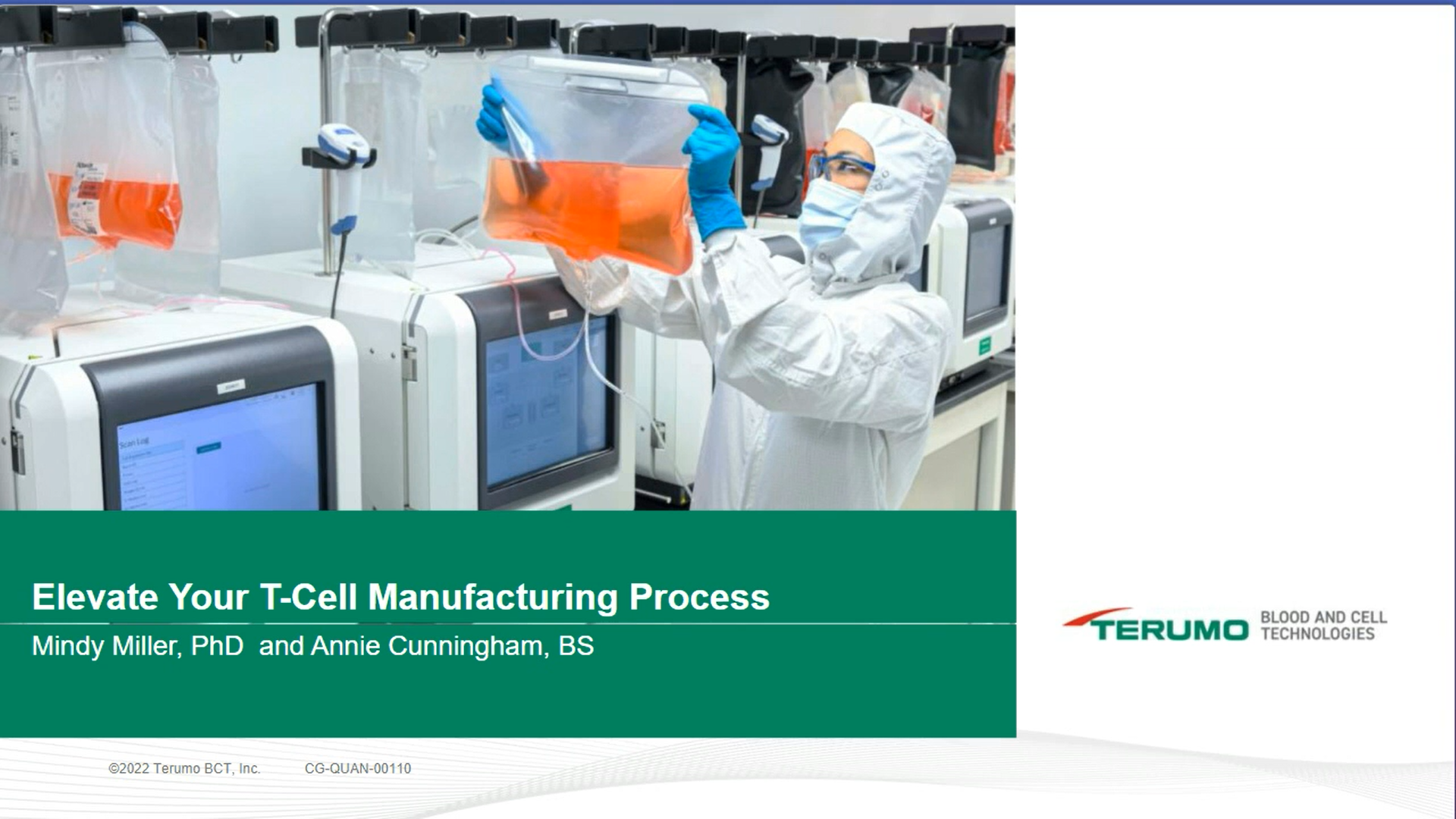
T-cell production has come a long way from the days of lengthy manual processes in labs with several technicians required. Uses of automation are improving output and efficiency in T-cell production, with fewer personnel required. Processes can run without interruption or the need for manual interventions.
In addition, due to the growing volumes of data available with automation, operators can know exactly what is in each cell batch, which can then be used to refine production techniques and support regulatory approval.
One of the most significant benefits of automation is supporting the removal of the variability commonly associated with manual processes, as well as decreasing the multiple steps involved. Furthermore, the quality and quantity of products can also improve.
“When you’re doing things manually, you’re doing things step-by-step in an open system. But with automation, a lot of these platforms tend to be closed systems. So, that reduces the risk of contamination,” says Nisha Durand, PhD, director of GMP at BioCytics, Inc. “Then with automation, compared to a manual process, because you’re removing certain tasks, you’re reducing labor costs. What four people might be needed to do from start to finish can be performed on one platform with reduced human intervention.”
A major barrier to T-cell therapies for patients is the cost of treatment. The cost savings delivered by automation can help lower costs and may reduce treatment expense obstacles. While there can be upfront costs when purchasing automation equipment, long-term cost savings can be substantial.
“Initially, there’s an upfront cost. But there are long-term savings because you’re increasing throughput, you’re increasing product yield,” adds Durand. “Automation streamlines the process.”
For all the benefits of automation, the question remains: when is the best time to introduce automation for T-cell production?
Deciding when to automate T-cell production
In the earlier phases of a clinical trial, a manual process for T-cell production might be sufficient, as the quantities of product required are far smaller. However, scalability is a challenge for manual T-cell production.
If automation is introduced in the later stages of product development, there will need to be changes to the process and redefining of parameters — which can cause delays and complications. Once a process has been established, it becomes more challenging to automate it later on in product development.
After a trial has ended and a product has received regulatory approval, the scale-up in manufacturing can be even more challenging if automation is implemented at that point.
In contrast, incorporating automation in earlier stages of T-cell manufacturing and clinical trials can lead to a far smoother process. Crucially, the scalability of batches is made easier — as is reproducibility.
“The number of batches or the quantity of cells required in process development or early Phase I is not the same as required when you move to Phase III or commercialization,” explains Durand. “But since these automated platforms allow scalability, you might start on a small scale in process development and scale up and out as you move through the clinical pipeline to meet the demands of that specific phase.
“It makes it easier if you have used automation and defined and identified a suitable platform even before entering Phase I. Early in the process, a manual method might be sufficient,” adds Durand. “However, once you progress beyond Phase 1, although it is possible to automate, it’s going to be a lot more difficult. It makes sense to automate, if possible, very early on in the clinical development pipeline.”
Managing the complexities of T-cell production through automation
Even with the advantages of automation, manufacturing T-cell therapies will continue to present complexities that must be managed carefully — especially when switching from one material to another. But automation can help to remove much of the variability involved with T-cell production based on the starting materials.
“There will always be some challenges with maintaining consistency across the batches, especially with an autologous T-cell product,” says Durand. This is because the T cells from donor A may be very different from the T cells from donor B.
“Compared to a manual process, growing or expanding cells with automation facilitates better control of variabilities that are inherent to the donor material. With automation, you can monitor your process and evaluate the analytics in real time. And that allows you to change process parameters based on your observations.
“There’s inherent variability that will always exist based on the starting material, especially when patients have been on different therapies. And that varies from person to person. But automation can assist with greatly eliminating a lot of that variability.”
Effective automation platforms that can handle such complexities are set to be in considerable demand. “T-cell manufacturing often involves cell isolation, cell expansion, and genetic modification steps, and these are not trivial processes, especially when working with rare cell populations,” adds Durand. “So, developing a platform that can handle these processes in a way that the end user desires is not always a simple process.”
The future of T-cell production and strategies
Greater awareness of the benefits of automation in T-cell production could soon start to influence production strategies. Automated platforms already available on the market can more quickly produce high-volume batches of T cells, while maintaining quality.
“With the increased efficiency, you’re going to have more batches of cells. Right away, that increases the number of patients that can be treated,” adds Durand. Higher volumes of data generated from automated production could accelerate the development of T-cell products and expand our understanding of key process parameters. In addition, applying artificial intelligence (AI) and machine learning to data analysis can help predict outcomes, refine processes, and optimize manufacturing.
“All of that equates to getting these cell therapies to patients in a reduced time frame, while maintaining the integrity and quality of the cells,” says Durand.
Many predict that the advantages of automation will help to increase the number of patients who can access and benefit from T-cell therapies. Such treatments could one day be first-time therapies that even cure patients of serious conditions, removing the need for them to be on long-term medications. Ultimately, the automation of T-cell production could soon lead to a radical shift in how healthcare is delivered.
To learn more about the ways to enhance the accessibility of cell therapies, click the link below.



